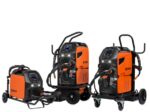Enhance your customer experience with integrated CX tools
– Lindsay Brown, Vice President and General Manager, Asia Pacific & Japan, GoTo. Advancements in automation, AI and digital transformation have created an opportunity for industry sectors to be leaders in internal and external business excellence, ultimately leading to best practice customer experience (CX). The manufacturing industry is a sector to lead the way and set the standard. Customers have become more savvy and more connected to every touch point in their supply chain, expecting more from every interaction. This newfound expectation has led to manufacturing companies increasingly focusing on quality assurance across all aspects of delivering products and services, while enhancing their business models. This inevitably results in boosting CX. In addition to product specialisation and best-in-class talent, companies are realising the urgency of unlocking the operational efficiencies that make work easier and more flexible. In Foundry’s Global MarketPulse Survey commissioned by flexible communications provider GoTo in Australia and New Zealand, 52% of businesses rated improving customer experience as a top customer support goal in 2022. Fifty-six percent also rated faster resolution times as a top customer goal, and 44% rated improving operating efficiencies and reducing costs. Yet there are challenges to overcome. Eighty-two percent of businesses surveyed rated simplifying the support experience for customers as a challenge, as well as integrated ticketing with communication channels (82%), increasing visibility into agent/technician performance/standard metrics (86%) and integrating remote support with CRM (88%). With customers at the centre of virtually every business decision, a growing number of companies are clueing into the wide-reaching benefits of flexible, cloud-based communications systems in delivering a competitive advantage through industry leading CX. The new technology is greatly assisting manufacturing companies – no matter what size or industry – to stand out by (over) delivering on their customer promises, by delivery in full and on time. […]











